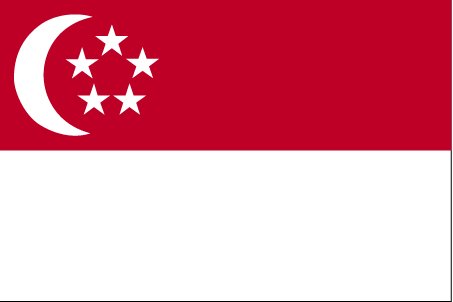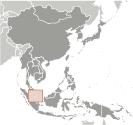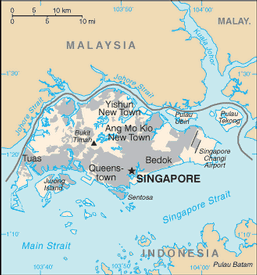 |
Introduction
Overview
Singapore is a republic located on an island in South-East Asia at the southern tip of the Malay Peninsula. In 1819, it was founded as a British trading post. Because of its vital location, it became the one of the most important commercial port for the British Empire. In 1963, Singapore declared independence from Britain and joined the Malaysian federation. Two years later, it became an independent republic. Since then, Singapore has become a developed country in the field of education, health and economy.
Geography
Location: in South-East Asia between Malaysia and Indonesia.
Area: 697 sq km
Highest point: Bukit Timah Hill at 163.36m
Climate: Tropical. It’s hot, rainy and humid. It has two monsoon seasons (December to March and June to September).
Terrain: Singapore's land surface low in general.
Borders: Malaysia from the north.
People
The population of Singapore is approximately 4.7 Million and they are composed of Chinese (76.8%), Malay (13.9%), Indian (7.9%) and other people (1.4%). So, there are three four official languages which are English, Malay, Tamil, and Chinese. Singapore is a multi-religions country because of the diversity of race. Buddhism is the most widespread religion (42.5%) followed by Islam (14.9). Then Taoist (8.5%), Hindu (4%), Catholic (4.8%), other Christian (9.8%), other 0.7%, and people without religion 14.8% are the remaining people. The age structure of people is 14.4% under 14 years, 76.6% between 15 and 65 years and 8.9% above 65 years.
Economy
Singapore is the 5th wealthiest country in the world in terms of GDP- per capita (PPP). Also it’s ranked as the tenth most expensive city in the world in which to live. Singapore's economy depends on international trade and exports on electronics, financial service and pharmaceuticals. Because it depends on exports, the economy contracted by 1.3% during the global financial crisis in 2009. In 2010, the government plan for the future is to focus on increasing productivity by enhancing skills, innovation and attracting investments to keep Singapore the Southeast Asia's financial and high-tech hub.


